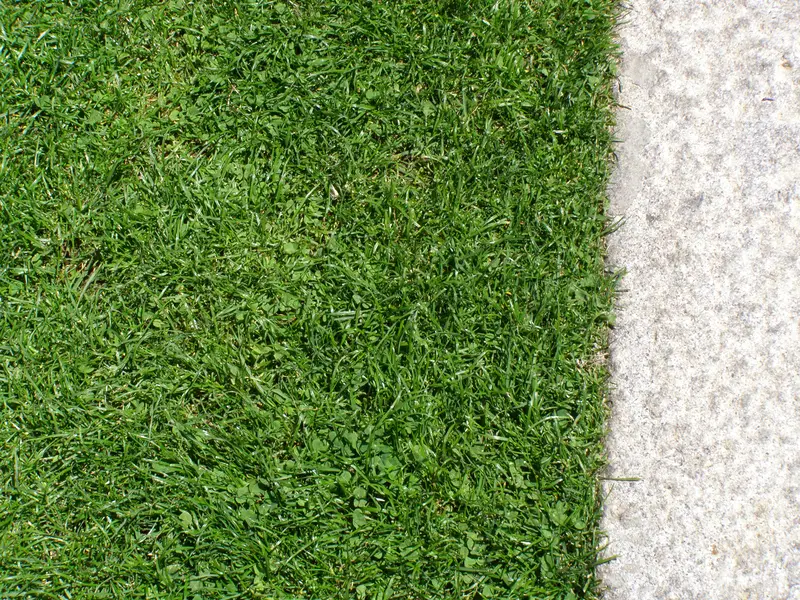Introduction
Turning your garden grass to rocks is an amazing idea. These gardens require low maintenance once you set them up. In fact, it’s a way to reduce water costs and labor time.
So, you are looking for ways to make it happen? If it beats your brain out, it will not anymore. Because we have rounded up everything about how you can turn garden grass to rocks right here.
So, without wasting time, let’s just get into the point.

Things You’ll Need
So, before we say ‘let’s start’ you must need to know what tools and materials you are going to need. Then, it’s better to peek into the list first:
- Rocks
- Sod cutter
- Grub hoe
- Tarp
- Wheelbarrow
- Metal garden rake
- Flat shovel
- Weed-resistance fabric
- Landscape pins
- Gardening Scissors
- Flat rubber edging strips
Once you are done with managing or purchasing these, let’s begin working.
The Steps You’ll Go Through
Here we summed up all the instructions within 8 easy steps. Let’s check them out!
Step 1: Prepare Your Space
Remember, a rock garden is fairly a permanent structure. For this, if you place it in spots where there are manhole covers or underground pipes, it’ll take a lot of guts for handling these.
After setting your mind about where the garden will be, clear the site of plants, grass, and large debris. Remove small areas of sod using a grub hoe. If you’ve recently harvested grass seeds, you’ll have to choose between the grass or the rock garden project. To sever the root layer of the sod, take short swings (a couple of inches deep).
Now, use a wheelbarrow or a tarp to set aside the cut sod pieces or you can use the sod pieces to fill in holes in your yard.
Step 2: Remove the Large Areas of Sod
Use a sod cutter in order to remove large areas of sod from the space. Better if you rent a gas-powered sod cutter from many home and garden centers out there.
But, before you start cutting, make sure you utterly understand the operating instructions. Worth noting set the blade to 2 or 3 inches of height. You can do a test first removing a strip of grass and also make any necessary adjustments.
Use a flat shovel to remove any small patches of grass.
Step 3: Plan the Area’s Drainage Route
You need to think about the drainage and also how to improve it. Here is what you need to do if your soil does not drain well:
Firstly, remove a few inches of the topsoil. Now, mix in some materials that will help your soil drain water more efficiently. The materials are- about six inches of gravel, broken bricks, rubble, peak shingle, or coarse sand down.
Step 4: Lay Weed-Resistance Fabric on the Ground
Before laying the fabric, smooth the soil using a metal rake. Now, cut a piece of heavy weed-resistance fabric to fit over the area where you removed the sod. This will allow water to penetrate but won’t allow weed to grow through the fabric.
Also, use some landscape pins to attach the fabric to the ground.
Step 5: Install Edging Around the Area
Edging will beautify the area by adding a decorative effect. So, install edging around the area you wish to place the rocks. Here, flat rubber edging strips will work best as well as allow you to run the wheels of the mower over the top (so, trimming isn’t necessary).
So, all you need to do is to lay the edging strips flat and secure them to the ground with landscape pins.
Step 6: Place the Rocks
Select what rocks you want to use to create the garden. Many of the homeowners choose a random scattering of large or smaller rocks, this works well. But, try to use at least two or three large rocks, it will help to highlight the rock garden.
Place the rocks as you want to. You may create a natural look or a formal look (less natural looking). Creating a frame of rocks around your plant bed will look good. Moreover, this will help to define the area you’ll work on as well as look quite striking.
Step 7: Place Topsoil Between the Rocks
When you have the rock in place, just put a layer of weed-free topsoil in between the rocks. Using a soil that is 30% grit will better the soil drainage.
Now, place the soil into the ground and water it with a garden hose (make sure the air bulbs are removed). Wait for a few days before planting your garden and let the rocks settle a bit.
Step 8: Plant in Your Rock Garden
Select plants for your rock garden wisely. Clump-forming, low-growing, and smaller plants work better in rock gardens. After setting your mind about what will be your plants, work on growing them and look after the plants from the very beginning.
Voila! You are done with recreating your garden!
FAQs
Question: Could I use plastic cover/newspapers instead of weed-resistance cover?
Answer: Yes, you can.
Question: What plants should I choose to put in my rock garden?
Answer: Small and decorative plants should be used. Such as, cacti or succulent will be perfect to put in a rock garden.
Question: If I still have weeds in my rock garden, what should I do?
Answer: Kill them by spraying the chemical weed killers or pulling them by hand.
Warning
Be very very careful not to damage your back lifting heavy materials. Moreover, you will need help to put the larger rocks into their places.
Conclusion
That’s all we stored for you. Hopefully, by reading this article, you are no more confused about how you will turn garden grass to rocks.
In the end, we’d like to say to you that you should care for your rock garden from the very first day. You can use an ant killer if you notice ants there (ants set up their home in between rocks). Spend some time weeding your garden every few days. You’ll have a perfect rock garden, no doubt.
So, go for it, happy gardening!
As an Amazon Associate I earn from qualifying purchases.

